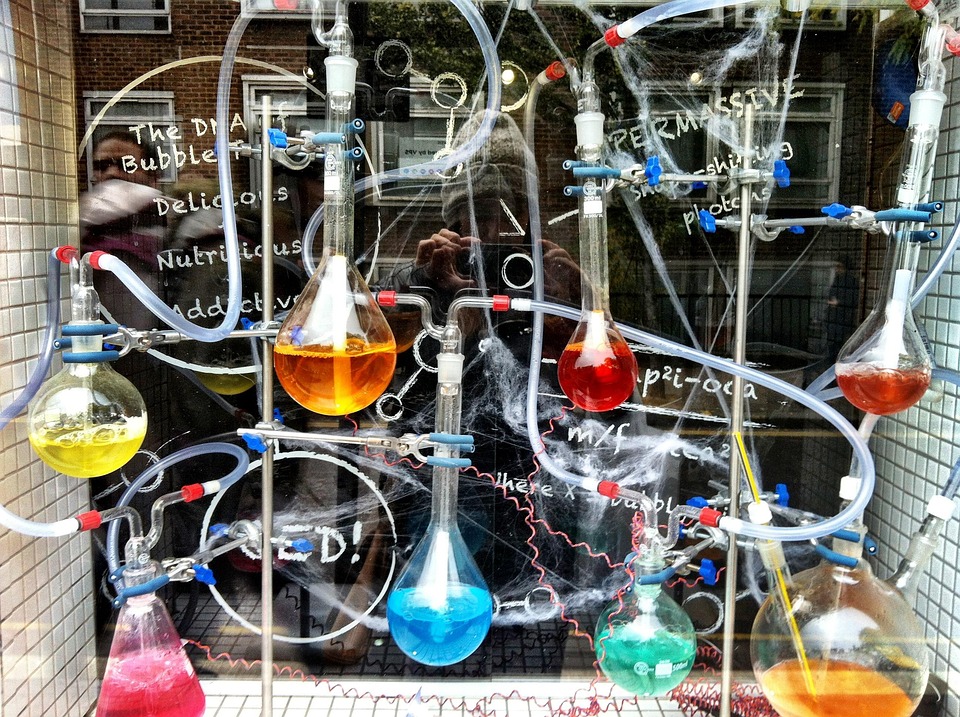Chemistry in Crisis: Addressing Climate Change Through Innovative Chemical Solutions
Introduction
Climate change represents one of the most significant global challenges of our time, with far-reaching implications for ecosystems, human health, and the economy. As the scientific community seeks multifaceted solutions, chemistry emerges as a crucial player in crafting innovation that can mitigate climate change impacts. This article examines the pivotal role of chemistry in addressing climate change, exploring innovative chemical solutions, their applications, and the future of the scientific community’s efforts.
The Role of Chemistry in Climate Change
Understanding Greenhouse Gases
The primary driver of climate change is the increase in greenhouse gases (GHGs) in the atmosphere, particularly carbon dioxide (CO₂), methane (CH₄), and nitrous oxide (N₂O). These gases trap heat from the sun, leading to a warming effect known as the greenhouse effect. Chemists have played a vital role in understanding these gases’ chemical properties and reactions, paving the way for targeted interventions.
Developing Renewable Energy Sources
Transitioning from fossil fuels to renewable energy is essential in combating climate change. Chemistry enables the development of sustainable energy sources through:
-
Solar Energy: Photovoltaic technology relies on chemical processes to convert sunlight into electricity. Advances in materials, such as perovskite solar cells, have increased efficiency and lowered production costs, making solar energy more accessible.
-
Biofuels: Chemists are developing biofuels from renewable resources, like algae and agricultural waste. These sources can significantly reduce GHG emissions compared to traditional fossil fuels.
- Hydrogen Fuel Cells: Hydrogen, when produced from renewable sources, offers a clean energy solution. Chemists are exploring catalysts to enhance hydrogen production and fuel cell efficiency.
Carbon Capture and Utilization (CCU)
CCU technologies aim to capture CO₂ emissions from industrial processes and utilize them to create valuable products. Key methodologies include:
-
Direct Air Capture: Techniques that extract CO₂ directly from the atmosphere are under development. Advances in sorbent materials are crucial for enhancing efficiency.
- Chemical Reaction Utilization: Captured CO₂ can be converted into materials like fuels or plastics through various chemical processes. For example, urea synthesis for fertilizers can be reimagined to use captured CO₂.
Sustainable Chemical Processes
The design of sustainable chemical processes is essential to reduce the environmental footprint of chemical production. Key areas include:
-
Green Chemistry Principles: The twelve principles of green chemistry emphasize reducing waste, improving energy efficiency, and substituting hazardous substances.
- Biotechnology and Biocatalysis: Utilizing enzymes to facilitate chemical reactions minimizes energy input and waste generation, showcasing how biological systems can inform sustainable practices.
Innovative Solutions from Chemistry
Energy Storage and Batteries
As renewable energy sources become more prevalent, energy storage systems are critical for balancing supply and demand. Chemistry plays a vital role in the development of advanced battery technologies, such as:
-
Lithium-ion Batteries: These batteries are foundational to modern technology. Continued innovations seek to improve cycle life and energy density while reducing environmental impacts.
-
Solid-State Batteries: Emerging solid-state battery designs promise increased safety and energy density. Innovations in electrolytes and materials are at the forefront of this development.
- Flow Batteries: These batteries offer large-scale energy storage solutions. They utilize chemical reactions in liquid electrolytes, allowing for longer-lasting energy storage and discharge.
Sustainable Agriculture
Chemistry’s contribution to sustainable agriculture is critical in tackling climate change and food security. Innovative chemical solutions include:
-
Fertilizer Development: Chemists are developing slow-release fertilizers and biodegradable options that minimize nutrient runoff and reduce dependence on synthetic fertilizers.
- Pesticide Alternatives: Natural compounds and biopesticides offer safer alternatives to synthetic pesticides. Understanding the chemistry of plant interactions can lead to improved pest formulations.
Plastic Waste Management
The global plastic crisis exacerbates climate change and environmental degradation. Chemical innovations are addressing this issue through:
-
Biodegradable Plastics: Chemistry is instrumental in developing bioplastics derived from renewable resources that degrade more effectively than traditional plastics.
- Recycling Processes: Innovations in chemical recycling can reclaim valuable monomers from used plastics for reuse, closing the loop on plastic production and consumption.
Air Quality Improvement
Chemical technologies are essential for improving air quality, particularly in urban areas. Solutions include:
-
Catalytic Converters: Employed in vehicles, catalysts convert harmful emissions into less toxic substances, showcasing applied chemistry’s potential to reduce air pollutants.
- Air Purification Technologies: Advanced filtration systems and photocatalytic technologies can eliminate particulates and volatile organic compounds (VOCs) from indoor environments, reflecting innovative chemical applications.
Challenges and Considerations
Economic and Policy Frameworks
While innovative chemical solutions hold promise, their widespread adoption requires supportive economic and policy frameworks. Considerations include:
-
Funding and Investment: Increased funding for research and development is crucial in fostering innovation and accelerating transition to sustainable practices.
- Regulatory Support: Policies encouraging the adoption of green technologies, incentives for renewable energy, and stringent emissions regulations are imperative.
Public Perception and Education
Public perception of chemistry is often influenced by environmental concerns and safety issues. Engaging education is crucial in:
- Increasing awareness of chemistry’s role in sustainability.
- Encouraging community participation in scientific endeavors.
- Addressing misconceptions surrounding chemical substances and their impact.
The Future of Chemistry in Climate Solutions
Collaboration Across Disciplines
Interdisciplinary collaboration is key to advancing chemical solutions for climate change. Partnerships between chemists, engineers, policymakers, and social scientists can lead to comprehensive strategies that address the complex and interconnected nature of climate change.
Embracing Innovation and Technology
As technology continues to evolve, chemists must embrace innovation, particularly in:
-
Artificial Intelligence and Machine Learning: These technologies can accelerate the discovery of new materials, optimize processes, and model complex chemical interactions, providing significant advancements in climate-related chemistry.
- Data Sharing and Open Science: Promoting open access to research data and findings will expedite collaboration and drive progress in innovative chemical solutions.
Education and Advocacy
Educating the next generation of chemists is essential for sustaining momentum in climate solutions. Educational institutions should focus on:
- Integrating sustainability into chemistry curricula.
- Encouraging problem-solving skills addressing real-world environmental challenges.
- Promoting ethical considerations in chemical practice.
Conclusion
Chemistry stands at the forefront of the global effort to address climate change, offering innovative solutions across various sectors. By harnessing the principles of green chemistry, collaborating across disciplines, and cultivating a new generation of scientists, the chemical industry can actively contribute to a sustainable future. The alignment of science with societal needs will ultimately determine the success of these innovative chemical solutions in combating climate change.
This article presents an overview of chemical approaches to mitigate climate change while emphasizing the importance of innovation, collaboration, and education. As challenges persist, embracing these strategies within the chemistry community will be critical in navigating the path forward.
References
- [1] United Nations Intergovernmental Panel on Climate Change (IPCC). (2021). Climate Change 2021: The Physical Science Basis. Available at: www.ipcc.ch
- [2] G. W. H. (2020). Innovations in Renewable Energy: An Overview. Chemistry of Sustainable Energy, 1(1), 1-15.
- [3] National Renewable Energy Laboratory. (2022). Research and Development Projects: Advancing the Energy Transition. Available at: www.nrel.gov
- [4] American Chemical Society. (2018). Green Chemistry: Theory and Practice. Available at: www.acs.org
- [5] Science Magazine. (2023). Advances in Plastic Recycling: Turning Waste into Value. Available at: www.sciencemag.org
The references listed can serve to substantiate further studies while following citation norms and methodologies in scientific research. The overarching message is that chemical innovations are indispensable in the fight against climate change, and proactive engagement within the scientific community and society at large can cultivate substantial progress.


























Add Comment